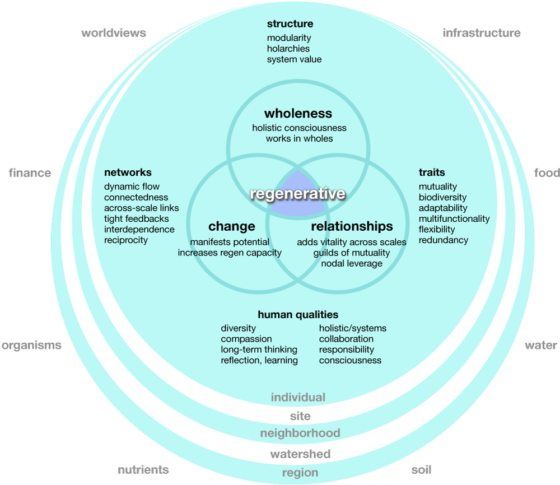Catalysts hubs as a pathway for regenerative development

What is regenerative development?’ Let’s start with a vision inspired by Bill Plotkin, author of Soulcraft:
“When a sufficient number of contemporary people have reentered nature’s soulstream and become conscious contributors to the unfolding story of the world, domination culture might mature into gylanic*, ecocentric, and soulcentric communities, inhabited by people who are wildly caring, playful, trusting, mutualistic members of the more-than-human world.”
*gylanic — a social system based on equality of women and men
“Regenerative” is nature’s inherent process of manifesting continually higher states of health, wellbeing, and vitality for all life. It is thrivability in perpetuity. For humans, “regenerative” entails aligning our thinking and actions with nature’s principles. This is not a pipe dream. This is the birthright of every human being, of every living system on Earth.
Thousands of communities, projects, initiatives, organizations, and individuals are working toward this way of living and being. The will is here. Initial technologies and ancient wisdom are here. Small, disconnected pieces of the puzzle are here. We see two main needs to unlock the potential of existing, developing, emerging, and yet to emerge initiatives: 1. an overarching guiding, coordinating, and networking collective impact* initiative, and 2. a mobilization of financial capital into other forms of capital (e.g., natural, human, social, spiritual, built) that will catalyze more life, greater health and wellbeing for all. See SEEDS as an experiment in a regenerative currency.
*collective impact — an intentional way of working together and sharing information for the purpose of solving a complex problem
What are foundational principles for regenerative development? One source is Regenerative Economics and the Ten Forms of Capital, which applies regenerative principles to the economy. Another source is The Center for Partnership Systems, committed to supporting a ‘gylanic’ society that is based on equality of women and men, founded by Riane Eisler, author of the seminal book, Chalice and the Blade. The Regenerative Living Institute has established academic guidelines for regenerative, which is what the main diagram above is based on.
One pathway to regenerative communities is the development of regenerative catalyst hubs, one small group of dedicated people, one meeting place at a time. Catalyst hubs can be community-serving places that serve as catalysts for a regenerative culture and economy in the neighborhood, region. Not only are these catalyst hubs designed, governed and owned by local communities, but they develop their own local currency as well, through a local currency platform system we are piloting. Learn more about catalyst hubs here.
The objective is to establish a living example, a fractal, with one physical place in a community that can then inspire and regenerate life. First a single place, then blocks (e.g. Cool Block program), and eventually neighborhoods and cities. Life in these places would flow through a diversity of local and regional regenerative currencies (based on the ten forms of capital mentioned above) that eventually manifests a global caring, gylanic, regenerative culture, economy and society.

Leave a Reply